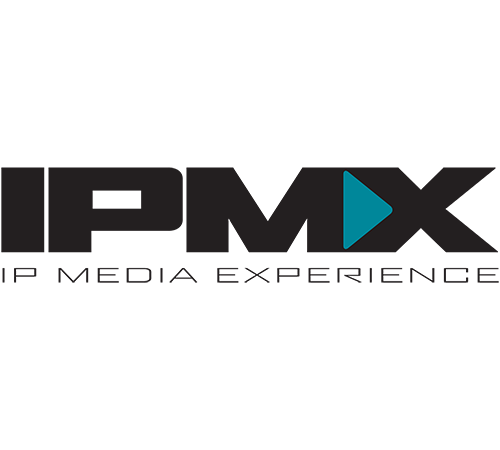
If you’re old enough to remember the late 80’s, you might recall descriptions of something called “The Internet.” It was a vague notion of a sort of network that was difficult to comprehend. The most popular attempt at explaining it involved a future where you could “access all of the books in the Library of Congress, right from your computer!” Most Americans hadn’t accessed a single book from their local library in the past year, yet somehow accessing a library in DC with their modem was supposed to bring home the fact that the Internet might be a Big Deal someday, at least to someone.
At that time, millions of computer users had modems and dialed into Bulletin Board Systems (BBS). I spent many an hour playing online games (Trade Wars anyone?), visiting chat rooms, and downloading free software. CompuServe, Prodigy and America Online were multimillion-dollar businesses that dominated the paid services space. This “Internet” was just a bigger version of that, right?
Once IP networks and the common suite of internet protocols became the only way to tie information systems together, humanity entered into the information age. Now, our personal and business lives are completely disrupted by its absence. We once bought tapes, then CD’s, and now we download whatever we want for $9.99 a month or for free with commercials. No longer do we know how to get anywhere because our phone does that for us. The Internet has changed almost everything, even though the Library of Congress still requires your physical presence to browse its collection.
Conceptions of the internet prior to its arrival reveal a pernicious tendency of people to substitute an understanding of transformative technology with something that is more like what they already understand, only bigger. Examples of library access didn’t illuminate anyone and the Internet was not like a bigger Prodigy or AOL. While there are technical details that made them different, these details also didn’t reveal the essence of it, or its impact.
Imagine being a product manager for one of the Big Three paid services companies. Why didn’t they flourish in the world created by internet standards? What could their product managers have done to help their companies manage this shift, besides buying a crystal ball?
In Broadcast and in Pro AV, a similar transformation is on the horizon. Broadcast is bifurcated between the SMPTE ST 2110 standard and NewTek’s NDI, while Pro AV is encumbered with more than a dozen capable, yet incompatible choices for low-latency video and audio over your network. The result is a market that is analogous to the pre-internet reality described above.
Over the past year, it has become clear that IPMX, which builds on SMPTE ST 2110 and AMWA’s NMOS APIs, is shaping up to be the standard that not only meets the needs of Pro AV, but also to become the standard that is used in both production and presentation workflows. With one open standard for low-latency video and audio over any network, for any purpose, the effect of IPMX will not be just like other AV over IP solutions, only bigger. It will be transformative.
What’s a product manager to do? How can you position your company to take advantage of this transformation, instead of being run over by it? While it is impossible to predict the precise effect that IPMX is likely to have on the Pro AV and Broadcast industries, I’d like to highlight four areas of interest.
## Innovating on top of IPMX
IPMX wraps up and extends existing standards to make AV over IP more accessible for more use cases, which includes the basics that Pro AV customers have come to expect in AV over IP: a base codec (JPEG-XS), USB extension for KVM, officially supported HDCP 2.3, device discovery and connections, and sane handling of EDID information. What’s left for a manufacturer to do?
To start, while IPMX specifies the base codec that must be present, it does not preclude alternative codec support. If higher compression or some other tradeoff is required for certain applications, manufacturers are free to meet that demand while remaining interoperable.
Also, the NMOS APIs make it simple for one vendor to discover and connect any other vendor’s devices, but it does not replace the need for control systems. In fact, NMOS enables control systems to provide unique capabilities by including guidelines on how to extend it and to coexist nicely with existing protocols. In this way, there is a simple, RESTful way to advertise extended control capabilities in your products. By following the patterns in NMOS, you make it simpler for customers to integrate and scale your products.
## Enabling Software and Virtualized Environments
In Pro AV, there is a long history of software customization and IPMX will help to accelerate this trend. That’s because it is designed to be implemented in both hardware as well as software. With IPMX’s Phase 2 technologies, like support for WAN and wireless transmission, IPMX’s future includes on and off premise, as well as mobile deployment. As a result, it’s likely that Pro AV product lines will include much more software, virtualizing some equipment that was once hardware.
What is more, even though making finished products that can be turned on and used will remain important, pro AV manufacturers will need to emphasize their software development kits (SDK) and APIs as a product, even more than before. Including NMOS and IPMX in your platform strategy will give you, and your customers, access to a huge, open ecosystem where customers can compose your product with others to create unique solutions to difficult problems. A robust software story will be required in order for your company to take advantage of it.
## Presentation, Production & Playing
Consider the AV activity happening in today’s schools, stadiums, universities, businesses, and even in the home. In every corner of life, people are using AV to produce, present and consume content. The differences between broadcast AV, professional AV, and even consumer AV tell us less about the customer and more about the context that the technology is being used within. At times, everyone is a producer of content, everyone wants to tell a story like a professional, and everyone wants to be immersed in the experience of it. Wouldn’t it be great if your product lines could be a part of all of that? Prior to IPMX, these worlds did not mix.
IPMX’s broadcast origins mean that the features required for live and interactive production have been thought through. The work done to extend the standard into pro AV is focused on supporting asynchronous sources, presentation workflows, and making things generally easier to deploy and use. Critically, this is being done while keeping an eye on interoperability between both presentation and production systems.
With IPMX, your products will be used in all of the contexts that your customers use AV products. Video is just video again. For manufacturers, this dramatically increases the total available market for your products, which means fertile ground for creative product managers. It’s time to rethink market definitions and what is possible.
## Get Involved
Some may caution against open standards, but history is pretty clear on their track record for success. Will IPMX be the standard for pro AV? Only time and customers will tell, but all signs point to “yes” as momentum continues to build towards what now seems to be inevitable.
Companies that take the time to plan for this disruption are the most likely to benefit from it. One way to do that is to get involved in the standards process. Even though much of the core work has been completed, there are many areas where your company can contribute to the effort. Just as important, you’ll have a firsthand, early understanding of the standards before they hit the market and that’s a priceless advantage over competitors that take a “wait and see” approach.
Perhaps best of all, you can say that you were part something so transformative, it could only be described as, “Like AV over IP, only bigger…”
Andrew Starks is Director of Product Management, Macnica Americas and joined executives from Grass Valley, Imagine Communications, Yamaha, Matrox, and Lawo AG on the board of the Alliance for IP Media Solutions (AIMS) in 2020. The AIMS Alliance is a non-profit trade organization founded to foster the adoption of the IPMX open standard for the transition to IP media. IPMX is based on proven broadcast standards and specifications, extended to brinig accessibility, flexibility, and affordability to AV Over IP for Pro AV.









